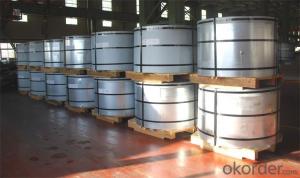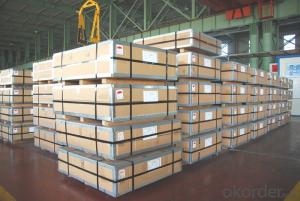Lacquered Tinplate for Metal Packing sheet Coils
- Loading Port:
- Shanghai
- Payment Terms:
- TT OR LC
- Min Order Qty:
- 100 m.t.
- Supply Capability:
- 40000 m.t./month
OKorder Service Pledge
OKorder Financial Service
You Might Also Like
Electrolytic Tinplate undoubtedly enjoys the pride of place as a packaging medium especially for food. It owes its unique position to its "nine layer sandwich structure", each of which contributes to its eminence as a packing material. The steel base provides the necessary strength and formability for can fabrication. The tin-iron alloy layer provides the bond between the steel and free tin layer. The free tin layer is not only responsible for the attractive bright finish and ease of solderability but is also non-toxic- a factor of vital importance in food packaging!
Electrolytic TinPlate: Composition
E.T.P. consists of five layers each of which performs a different role:
1. Steel Base: Provides stiffness to the material due to its thickness and mechanical strength. Its chemical composition imparts special properties to resist corrosion.
2. Iron-Tin Alloy: This is made up by the inter-metallic compound Fe-Sn2. Due to its electrochemical characteristics, it acts as a barrier against corrosion. For effective action, its continuity is more important than its quantity.
3. Metallic Tin: Tin has many advantages which have turned it into the most important element to protect steel used for cans; in many foods, it acts as a simple barrier against corrosion, improves weldability, it is an excellent base for lithographic printing and for applying lacquers. In tin-robbing foods, it acts as a sacrificial element.
4. Passivation Film: According to its nature, it makes it possible to improve the E.T.P.’s resistance to sulphiding, oxidation and rust. It is also a conditioner to improve the adherence of varnishes, inks, lacquers etc.
5. Oil Film: Protects the sheet from the humidity in the environment and makes easy to handle. It is applied using an electrostatic oiler on both sides of the sheet.
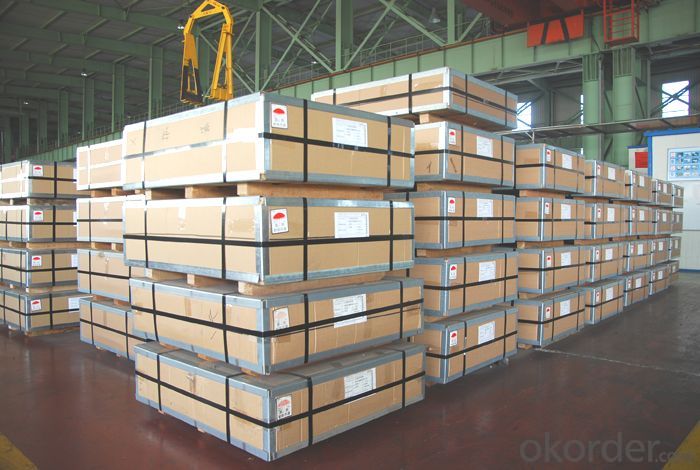
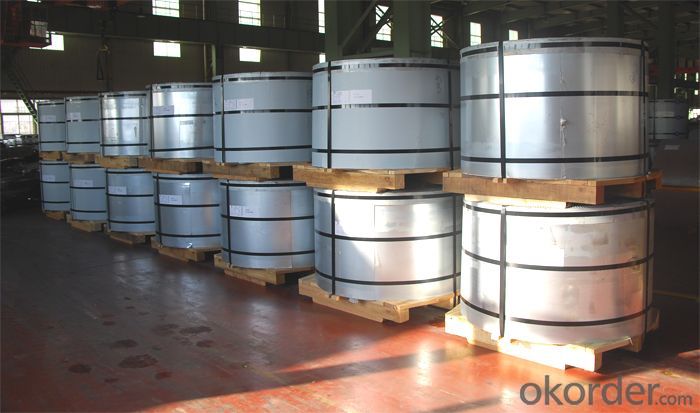
Prime Lacquered Tinplate for Metal Packing sheet Coils Specification
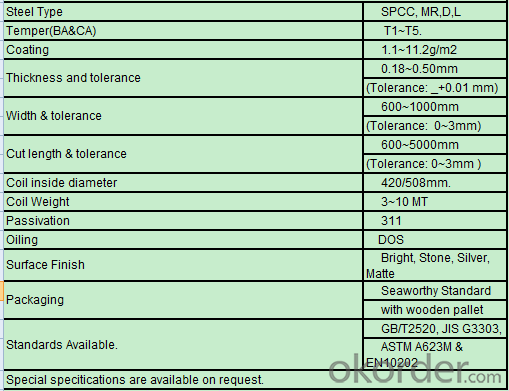
FAQ of Lacquered Tinplate for Metal Packing sheet Coils
How long does it take to get the product if i place an order?
With the process of your requirements,we will pack and deliver in 3-7 days.If it is by sea shipment,it will take 15-45 days depending on different locations.
- Q:Can you tell me how to deal with the recycling of tinplate?
- The tin is magnetic, is easy to recycle scrap. Second, waste tin as scrap iron and steel melted, make steel containing a small amount of tin (less than 0.1%), to improve the performance of cast iron.
- Q:How does tinplate handle exposure to UV radiation?
- Tinplate is not resistant to UV radiation and can undergo degradation or discoloration when exposed to prolonged sunlight.
- Q:How does tinplate packaging withstand extreme temperatures?
- Tinplate packaging is able to withstand extreme temperatures due to its high heat resistance and excellent thermal conductivity properties. This allows it to efficiently distribute and dissipate heat, preventing damage or deformation of the packaging. Additionally, the tin coating on the steel substrate provides a protective barrier that helps to preserve the integrity of the packaging even in extreme temperature conditions.
- Q:Can tinplate packaging be used for gardening products?
- Yes, tinplate packaging can be used for gardening products. Tinplate is a durable and corrosion-resistant material that can protect gardening products such as seeds, fertilizers, or small tools from moisture, light, and other external factors. Additionally, tinplate packaging can be designed with attractive graphics and labels to enhance product visibility and appeal to gardening enthusiasts.
- Q:What industries commonly use tinplate?
- The industries that commonly use tinplate include the food and beverage industry, packaging industry, automotive industry, and electronics industry.
- Q:Can tinplate be used for roofing and construction?
- Yes, tinplate can be used for roofing and construction. Tinplate is a thin, durable steel sheet coated with a layer of tin, which provides corrosion resistance and enhances its strength. This makes it suitable for various applications in the construction industry, including roofing, siding, and cladding. Tinplate's ability to withstand harsh weather conditions, its aesthetic appeal, and its cost-effectiveness make it a popular choice for roofing and construction projects.
- Q:How does tinplate contribute to the overall versatility of packaging?
- Tinplate contributes to the overall versatility of packaging due to its inherent properties such as strength, durability, and corrosion resistance. It can be easily shaped into various forms and sizes, making it ideal for packaging different products. Tinplate also provides excellent protection against moisture, oxygen, and light, ensuring the safety and longevity of the packaged goods. Additionally, its compatibility with different printing techniques allows for attractive and informative designs, enhancing the overall appeal of the packaging.
- Q:What are the main applications of tinplate?
- The main applications of tinplate include food and beverage packaging, aerosol cans, electrical components, and decorative items.
- Q:What are the main challenges in tinplate coil handling?
- Some of the main challenges in tinplate coil handling include the need for careful handling to prevent damage or deformation of the delicate tin coating, ensuring proper stacking and storage to prevent coil collapse or shifting, and the requirement for specialized equipment and techniques to safely maneuver and transport the heavy and bulky coils.
- Q:What are the main challenges in tinplate printing?
- The main challenges in tinplate printing are achieving high-quality prints on a curved surface, ensuring proper ink adhesion and durability, and maintaining consistent color reproduction. Additionally, the printing process must account for the potential presence of oil or grease on the tinplate, which can affect print quality.
1. Manufacturer Overview |
|
|---|---|
| Location | |
| Year Established | |
| Annual Output Value | |
| Main Markets | |
| Company Certifications | |
2. Manufacturer Certificates |
|
|---|---|
| a) Certification Name | |
| Range | |
| Reference | |
| Validity Period | |
3. Manufacturer Capability |
|
|---|---|
| a)Trade Capacity | |
| Nearest Port | |
| Export Percentage | |
| No.of Employees in Trade Department | |
| Language Spoken: | |
| b)Factory Information | |
| Factory Size: | |
| No. of Production Lines | |
| Contract Manufacturing | |
| Product Price Range | |
Send your message to us
Lacquered Tinplate for Metal Packing sheet Coils
- Loading Port:
- Shanghai
- Payment Terms:
- TT OR LC
- Min Order Qty:
- 100 m.t.
- Supply Capability:
- 40000 m.t./month
OKorder Service Pledge
OKorder Financial Service
Similar products
New products
Hot products
Hot Searches
Related keywords
